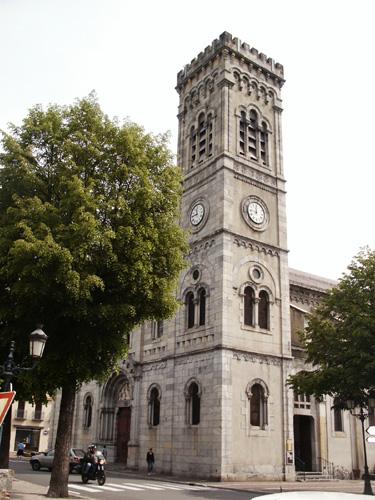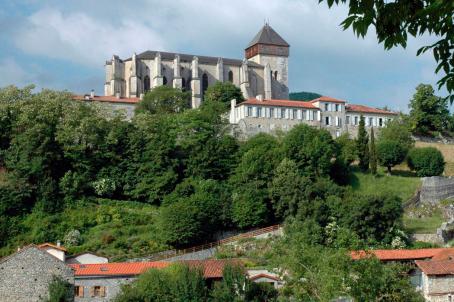Church of Notre-Dame de l'Assomption

The construction of the new church was carried out between 1847 and 1855, according to the plans of the Palois architect Loupot. It is a neo-Romanesque style building, with Byzantine features that give it an original appearance, and its ornamental and furnishings are relatively contemporary. The church is classified as a Historic Monument by decree of 24 July 2003.
About this building
The church of Notre-Dame de l'Assomption dates from the 19th century. It replaced a very old church from the 12th century, rebuilt during the Renaissance and became a collegiate church in 1766. Of stocky construction, almost square in shape, it was considered too small. The building consists of a single nave and a choir surrounded by a central apse and four apses that recall the nine apses that surrounded the former Romanesque collegiate church. In 1890, with the bell tower threatening to collapse, the church was extended to the west and the façade was completed in 1897 with its square tower. From the former collegiate church remains the Gothic portal to the west, in white marble of St Beat, dated 1541. The nave is decorated with frescoes by Romain Cazes, a disciple of Ingres, carried out between 1852 and 1856.





